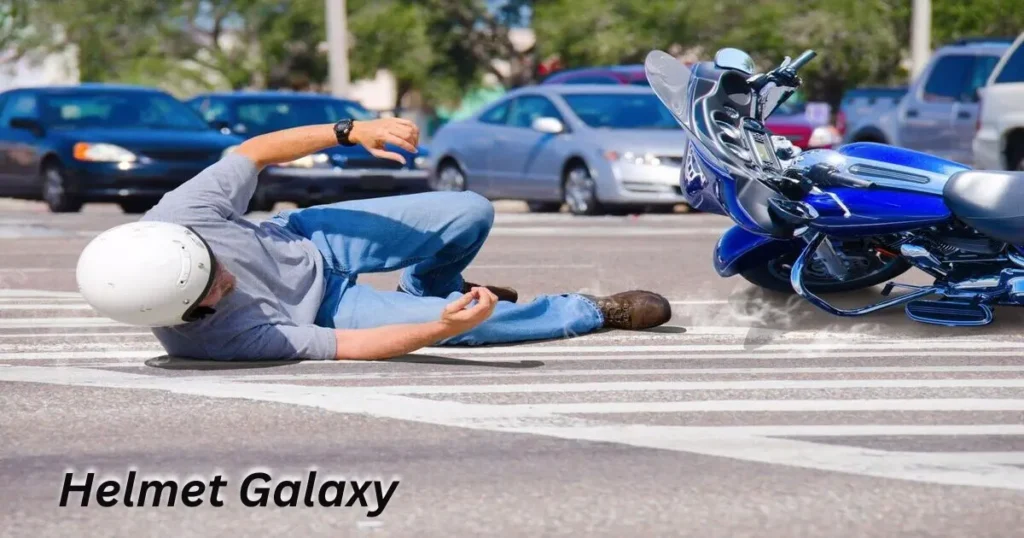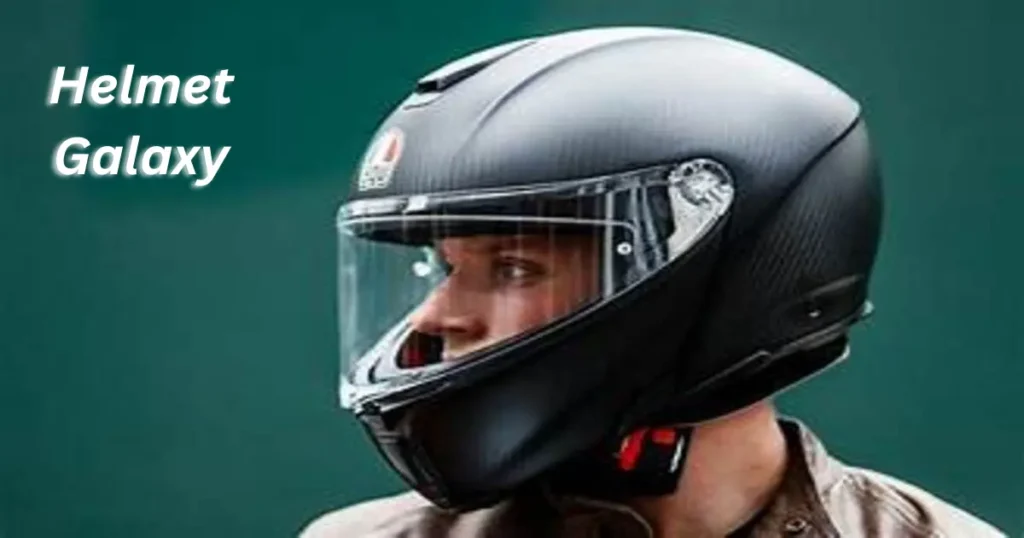Riding a motorcycle can be an exhilarating experience, but safety should always come first. An essential piece of motorcycle safety gear is a good quality helmet. But how often should you replace your motorcycle helmet?
What factors impact the helmet’s lifespan? This comprehensive guide examines how long motorcycle helmets last, when to replace them, tips for making them last longer, and answers frequently asked questions.
What is the Shelf Life of an Unused Motorcycle Helmet?

If properly stored, an unused motorcycle helmet generally has a shelf life of 5 years before it should be replaced. The materials and components can start to degrade over time even if the helmet hasn’t been used. The following factors come into play for an unused helmet’s shelf life:
- EPS Foam – The EPS or expanded polystyrene foam liner is essential for absorbing shock in the event of a crash. Over several years it can start to break down.
- Comfort Liners – The fabric comfort liners and cheek pads can deteriorate over time even if not used.
- Rubber Seals – Gaskets and rubber seals can begin to dry out and crack.
- Adhesives – The glues and adhesives holding a helmet together can grow weaker.
To maximize an unused helmet’s shelf life, store it properly:
- In a cool, dry place away from direct sunlight and excessive heat
- Avoid exposure to chemicals, fumes, pollution, and humidity
- Store on a flat surface, do not hang the helmet
- Avoid placing heavy objects on top that could deform it
But even with ideal storage, it’s best to replace an unused helmet after no more than 5 years. The materials break down over time regardless of use.
What is the Expected Lifespan of a Motorcycle Helmet in Use?

Unlike unused helmets where shelf life is the main factor, the expected lifespan of a motorcycle helmet in use depends primarily on frequency of use:
Used Frequently
If worn for regular motorcycle riding, replace helmets every 3-5 years. Frequent use means the materials will wear out faster. The EPS foam and comfort liners degrade as they absorb sweat, skin oils, and hair products. Abrasion from wind also takes a toll over time.
Used Occasionally
If only worn occasionally, helmets can potentially last 5+ years with proper care. But even gently used helmets should be replaced after 5-7 years due to slow material degradation. Be sure to closely inspect the helmet regularly as it ages.
Used Once Per Year
For helmets only used about once annually, it’s reasonable to get 8-10 years of life out of them provided they are stored properly when not in use. Have them inspected each season before riding. But they still need replacement after 10 years due to age deterioration.
Here are some general guidelines based on usage:
| Usage Frequency | Expected Lifespan |
|---|---|
| Frequent Use | 3-5 years |
| Occasional Use | 5-7 years |
| Once Per Year | 8-10 years |
But no helmet lasts forever. Even with minimal use, replace after 10 years at the latest.
What Factors Affect How Long a Motorcycle Helmet Lasts?

Aside from usage frequency, several other factors impact the functional lifespan of motorcycle helmets:
1. UV Exposure
Exposure to the sun’s UV rays can accelerate the breakdown of a helmet’s materials. The UV rays dry out and cause the EPS foam and fabric liners to crack and crumble prematurely. Storing the helmet inside when not in use helps prolong its life.
2. Impacts
Any sort of impact or drop can wear out a helmet faster. Even a minor impact compromises the EPS foam’s ability to absorb energy in a crash. A helmet should be replaced after any significant impact, even if no external damage is visible.
3. Heat
Excessive heat can damage motorcycle helmets over time. The interior comfort liners can shrink and deform if stored in hot places like a garage attic. High heat while riding also hastens the breakdown of materials.
4. Chemicals
Chemicals from cleaning products, solvents, automotive fluids, and other sources can weaken the materials in a helmet. Avoid exposure to any chemicals and clean the helmet only with products specifically designed for helmet care.
5. Hair Products & Sweat
Hair gels, sprays, and skin creams leave chemical residue in helmet liners that degrade materials over time. Sweat also deteriorates comfort liners and EPS foam. Wipe out the interior regularly and allow to fully dry before storage.
What Are the Signs It’s Time to Replace Your Motorcycle Helmet?

Inspect your helmet regularly for the following signs that indicate replacement is needed:
- Visible Damage – Any cracks, deep scratches, gouges, or dents mean the helmet must be replaced. These structural damages severely compromise protection.
- Broken Parts – Damaged or malfunctioning movable parts like face shields and pivoting visors indicate helmet replacement.
- EPS Deformation – Look for changes like dimpling or flatten areas in the EPS foam lining. This signals it can no longer absorb energy as effectively.
- Faded Paint/Graphics – Severely faded paint exposes breakdown of the outer shell. Discoloration also makes it harder for cars to see you.
- Liner Stains/Damage – Cuts, tears, shrinkage, or discoloration of the comfort liners signals the materials are breaking down.
- Interior Odors – Foul odors in a helmet indicate bacteria buildup from sweat and skin oils. This breakdown necessitates replacement.
- Clipped Strap – A strap that has been clipped by accident or to remove the helmet means it must be replaced. The strap is critical for proper security.
Carefully check for any of these warning signs that your helmet requires replacement for your continued safety.
Tips for Making Your Motorcycle Helmet Last Longer
With proper care and storage, you can maximize the lifespan of your motorcycle helmet:
- Limit UV Exposure – Store your helmet indoors shielded from sunlight when not in use. UV rays accelerate material degradation.
- Control Temperature – Avoid extreme heat and cold. Room temperature storage is best. Excessive hot or cold temperatures hasten breakdown.
- Use a Helmet Cover – A removable cover protects your helmet from UV rays, rain, bugs, and road debris when riding. It prevents direct damage.
- Clean Interior Regularly – Sweat and skin oils damage liner materials over time. Frequently wipe out the interior with mild soap and water and allow to fully air dry.
- Inspect for Damage – Check for any cracks, dents, tears or worn spots before and after every ride. Promptly replace a damaged helmet.
- Get Professional Inspections – Have your helmet professionally inspected every 1-2 years by the manufacturer or a specialty retailer. Technicians can spot hidden issues.
- Avoid Harsh Chemicals – Only clean the helmet with products specifically designed for helmets. Household cleaners can degrade materials.
With proper care and routine inspections, you can safely maximize the lifespan of your motorcycle helmet.
Conclusion
Motorcycle helmets protect riders in the event of an accident, but their materials degrade slowly over time. While lifespan depends on usage frequency and care, most helmets should be replaced after 5-7 years at most due to gradual breakdown of components like EPS foam and comfort liners.
Signs like visible damage, odors, and faded graphics indicate a helmet needs to be retired. Storing a helmet properly when not in use, limiting UV and heat exposure, and avoiding harsh chemicals can all help maximize its working life. But no helmet lasts indefinitely, so be sure to replace yours on a reasonable schedule for your continued safety on the road.
Frequently Asked Questions About Motorcycle Helmet Longevity
How can I find the manufacture date of my motorcycle helmet?
Most motorcycle helmets have the manufacture date molded into the EPS foam lining. Look for a date code stamped into the foam, usually inside the helmet or under the comfort pads. The manufacturer can also provide the date if you have the helmet’s ID code.
Can I get my old motorcycle helmet re-certified?
No, there is no professional service to recertify and extend the life of an expired helmet. The materials degrade over time and this cannot be reversed or repaired. The only option is to replace the helmet with a new model that meets current safety standards.
What if my helmet hasn’t been impacted but is over 5 years old?
Plan to replace a helmet after 5 years even if no visible damage. The EPS foam, comfort liners, and other components slowly degrade with age even if it’s never been impacted. An old helmet likely won’t provide the level of protection you may think, so err on the side of caution and get a new one.
Should I get the same model helmet when I replace my old one?
Not necessarily. Helmet technology and safety standards change over time. Look for a new model from a reputable brand that incorporates the latest protective innovations. Trying a different brand can also give you a chance to find one that fits your head shape better.
Should I choose a more expensive helmet for safety?
Not always. All helmets sold legally in the US must meet minimum standards set by DOT (Department of Transportation) or Snell. While premium helmets often provide added features for comfort, even budget models provide excellent protection if properly
Can I have my helmet reconditioned and re-used after an accident?
No, a helmet that has been in a motorcycle accident must be completely replaced. The EPS foam liner is designed to compress on impact to absorb energy. Once compromised, the helmet can no longer provide its intended protection. There are no repairs or refurbishing that can restore the safety. The outer shell, liner, and straps should all be replaced after an accident.
How should I clean the interior lining of my motorcycle helmet?
Use only products designed specifically for helmet interiors. Avoid harsh chemicals or cleaners that can damage materials. The safest approach is to use mild soap and water. Remove the cheek pads if possible and hand wash with the soap solution. Rinse thoroughly. Then allow all interior parts to fully air dry before re-assembling and using the helmet. Proper cleaning helps extend the lining’s lifespan.
Can I add an aftermarket component like a Bluetooth headset without reducing safety?
Yes, as long as the aftermarket component is properly installed without damaging the helmet. Only make modifications that don’t require removing any protective materials. Carefully follow the add-on device’s installation instructions. Improper mounting can compromise safety. The helmet manufacturer can advise if a particular add-on is safe to install.
How can I prevent my visor from getting scratched?
Apply a thin film visor protector to shield the visor from scratches. Some manufacturers sell anti-fog visor protectors for their helmets. There are also universal visor protectors available from aftermarket brands. Replacing a scratched visor is much more costly than applying a protective film. Just take care to apply the film properly to avoid bubbles and interference with vision.
What is the life expectancy of a motorcycle helmet?
Yes, your helmet does have a lifespan, and a fairly short one at that. The industry standard states that the lifespan of a motorcycle helmet is five years. That is as long as you have not cut its life short by an accident or impact to it. If that happens you should definitely not use it, time to trash it!
How often to replace motorcycle helmet?
Helmet manufacturers recommend that you replace your helmet 3 to 5 years from the ‘date of manufacture’. Helmet replacement is also endorsed by the Snell Memorial Foundation which recommends that “motorcycle helmets be replaced after five (5) years of first use, or less if the manufacturer so recommends.
How heavy should be a helmet for motorcycle?
Whenever buying a helmet, it is always advisable to purchase it according to its weight. From a weight standpoint, a helmet with an ideal weight is between 1200 and 1250 grams. The use of a heavy-duty helmet is prohibited, due to the risk of stress on your neck muscles and injury on your head as well.
